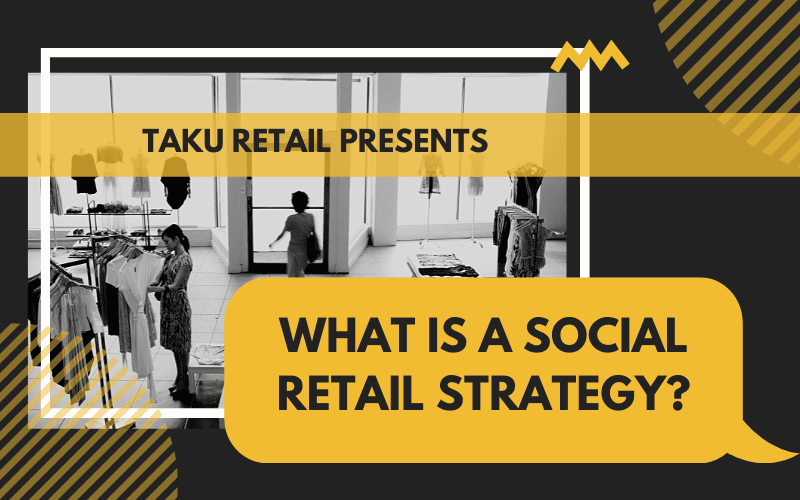Social media is all around us these days. Everyone from kids to grandparents are on at least one social media platform. So it is important to learn how to use this modern tool to boost your brand both online and in person. In fact, there are strategies for retailers focused around social media. Yes, there is such a thing as a social retail strategy. Today we will take you through what such a strategy is, and why it is important for you to have one in place.
So, what is social retail?

Social retail is an essential part of a modern omnichannel retail strategy. Social retail is using social media to communicate and engage with customers while also selling to them in-store and online. In a nutshell, the strategy succeeds by rewarding customers for sharing products they love. After all, many customers love to share their new purchases and favorite brands on social media. This is especially so when that product or brand aligns with their personality. The idea of social retail is to incentivize your customers to continue doing this – hopefully making it a habit.
For those who are familiar with word-of-mouth (WOM) marketing, social retail is just a modern, digital version. You want customers to be so happy sharing your products that their friends and followers begin to try them out as well.
It’s important to remember that it isn’t only about sharing your brand and products on traditional websites or social media channels. Some of the top performing brands in social retail feature their products on virtual platforms as well, in other words, metaverse retailing. A great example of this are some brands releasing their collections on Bitmoji. Even though they are not yet making money off of Bitmoji users wearing their brands, they are generating a lot of brand awareness.
You should keep in mind that a social retail strategy is not ideal for every type of retailer. Are you selling the type of items people would like to share? Are your customers the type of people to even want to share their purchases? These are some of the questions you should consider before investing in a social retail strategy.
Why you should do it

Whether or not your business has a large social media presence, it’s still common for customers to post about their experience online. If you provide a good experience, customers will advocate for your business and products online. It was found that 92% of consumers believe suggestions from friends and family more than advertising. So maximize this free promotion by having a social retail strategy that includes referrals.
Since social media is a place for people to connect and communicate online, it’s the best place to start or continue building a loyal community for your store. Once a community is established, your community members will be some of the most frequent buyers. They will even act as ambassadors for your store by promoting it to their friends and families. The beauty of the community is that users will inevitably end up building connections and bonds through shared experiences and values. This will boost the positive feelings associated with your brand – reinforcing your brand’s loyal community. Through a brand community paired with the right customer management tools, you’ll get to know your audience more and have better data and understanding on their expectations, wants, and needs.
How to do a social retail strategy
The first step is to decide which social media platforms you will use. It’s always better to use more than one, but take some time to consider which ones your customers are more likely to be active on. When setting up business profiles on each of them, make sure you are tagging your page with common keywords associated with your business. For example if you have a grocery store, you will want to use tags or hashtags such as: grocers, produce, food, etc. On top of that, you want to make sure your profile pictures are consistent across the board. These two steps will really help customers to find your profiles on social platforms.

The next step is to start creating content and posting! Make sure that your posts aren’t just random. Schedule them out and organize what type of posts you want and how often you want them uploaded. Create a good mix of promotional content, fun content for engagement, and content that speaks about the values of your brand.
Try to encourage customers to post or tag about your products! You can do this by showcasing their posts on the company account, having photo opportunities in-store for them to post about, hosting small giveaways or events for them to take part in, etc.
Just a reminder, not all of these examples work for all business types! Pick methods you think would work best for your own business. As long as the end goal is to encourage customers to share. Finally start adjusting your accounts and what you post based on feedback & data from your customers.
A social retail strategy is almost a given in 2022. If you haven’t started one yet, now you know why and how you should start. With 59% of the world on social media – you should be investing time and energy into boosting your brand on social and digital channels.
TAKU Retail has all of the tools needed to start selling on social media, and collect data on your customers. These essential tools will help you engage in the ultimate social retail strategy. Start today!



